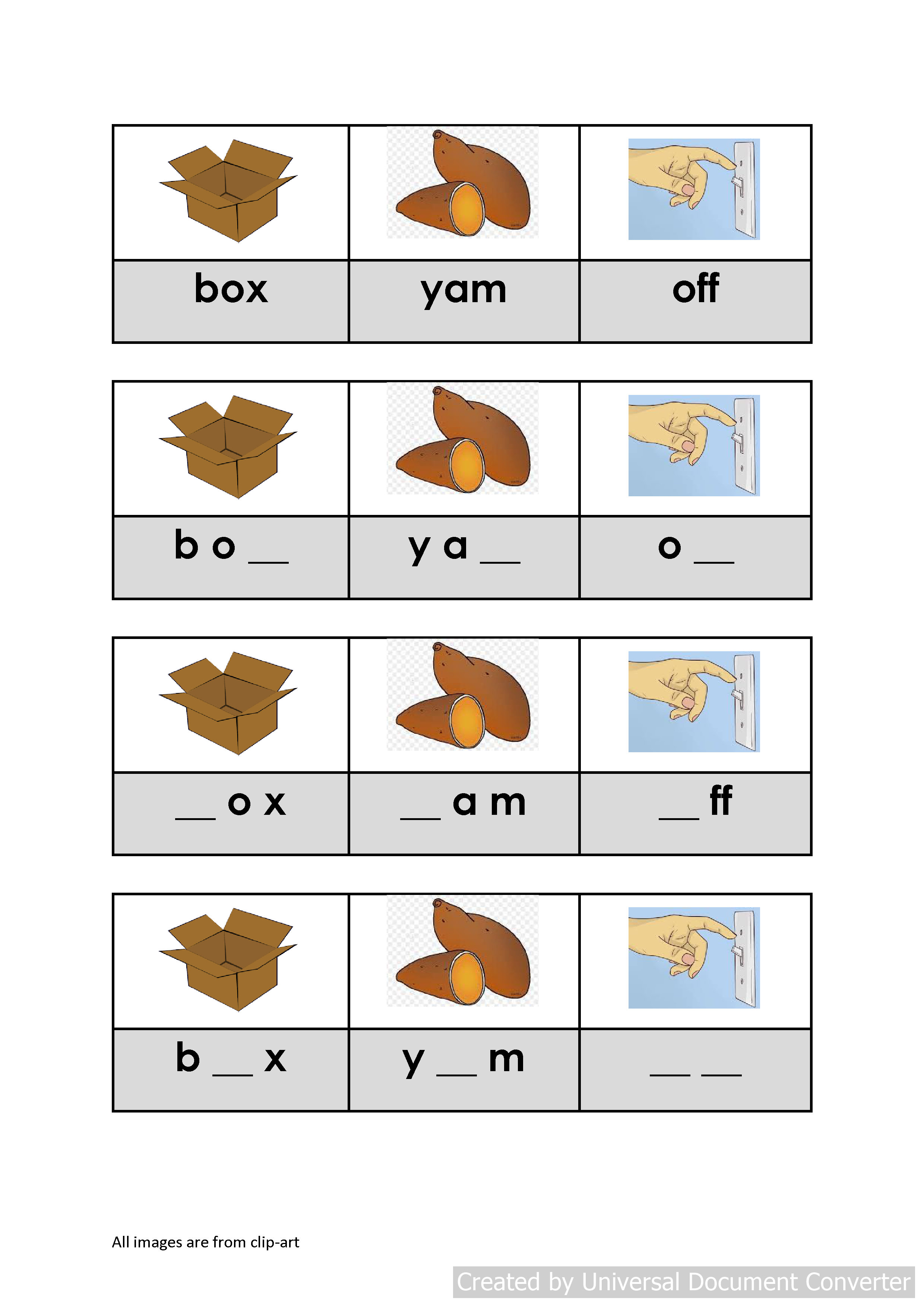New Phonics Resources

New Phonics Resources: The free resource available to download from this page is based on synthetic phonics principles. The worksheets provide a blueprint for parents and classroom teachers to complete specific synthetic phonics activities in the classroom or at home.
The activities to be released in the coming months will focus attention on the structure of simple CVC, CVCC and CCVC words and the many word combinations that can be formed from the five short vowels: a e i o u.
New Phonics Resources - Instructions
The CVC word lists for completion can be downloaded at the end of this page. Each page in the download will feature a picture of the target word with words that will be missing letters.
It is important that your child sound out each phoneme while writing the missing letters/graphemes. An important principle of synthetic phonics is that the sound is the most important thing, the letter/s should be thought of as the grapheme symbol that represents the sound.
Word lists for completion…
- x (/k/ + /s/) at end of word: box, fix, six, box, wax, vex, fax, fox, mix, tax
- y at start of word: yam, yell, yes, yum, yep, yet, yak, yin
- ff at end of word: off, puff, jiff, riff, tiff
- ll at end of word: bill, dull, sell, tell, bell, fell, yell, cell, well, till, pill, fill
- ss at end of word: kiss, fuss, Bess, less, miss, moss, hiss, loss,
The target words are CVC words. That is, each word has three sounds, two are consonant sounds (C), and one is a vowel sound (V). In these activities the vowels are all short vowels – a i o e u - and are consistently the same sound when your child makes a spelling attempt.
Click on image to download file...
Directions
- Your child’s task is to write the missing letters/graphemes in each box.
- There are 14 box sets of 3. Each word is at different levels of completion.
- The first series of three boxes contain the complete target word, and is to be used as a reference.
- Cover completed words before starting the exercises.
Tips
- Cover the target words.
- Encourage your child to sound out the sounds while writing the letters.
- Feedback for errors, i.e. your child writes fus for fuss. Say, ‘You have heard the /s/ sound as the final sound in this word.' Point to the letter s at your child’s attempt to write fuss. Say. ‘In this word we use double ss at the end. What do you need to do?’
New Phonics Resources - Final Thoughts
Note that each set of three words has accompanying pictures sourced from clip-art. Each set of boxes becomes increasingly difficult, and students should not initially attempt to complete the exercises independently.
The synthetic phonics worksheets should not be viewed as a replacement for classroom based structured synthetic phonics tuition but viewed more as a support for systematic, classroom based tuition and for when your students are working through decodable readers.
Updated 23/07/2020

